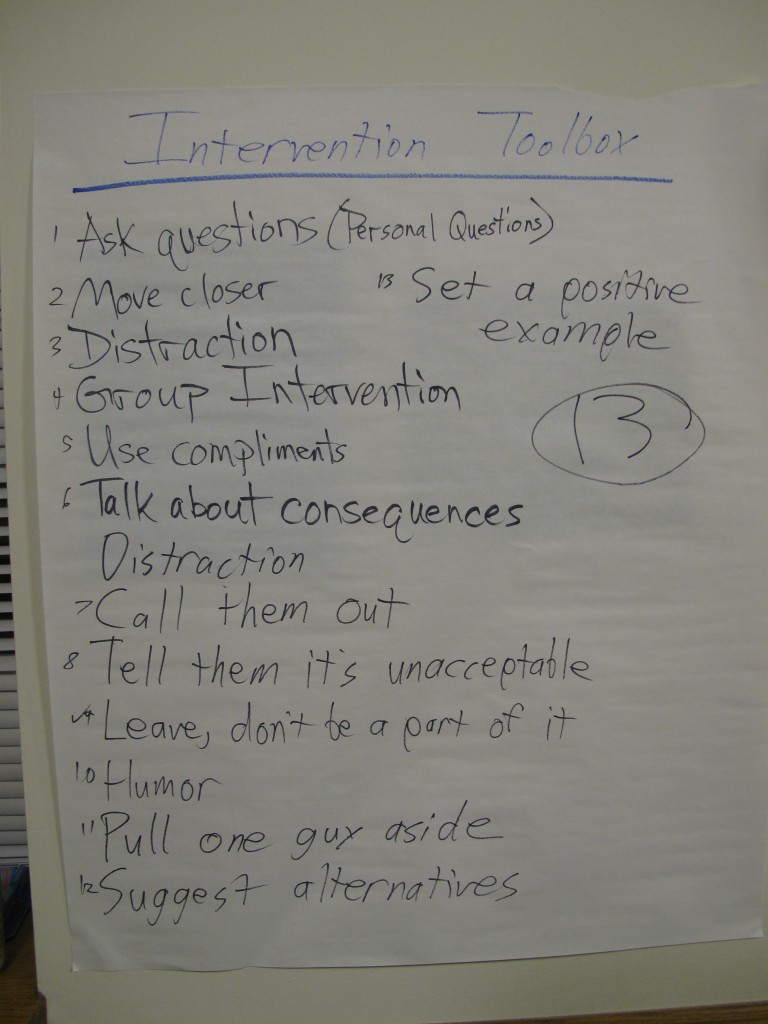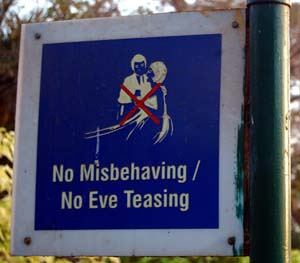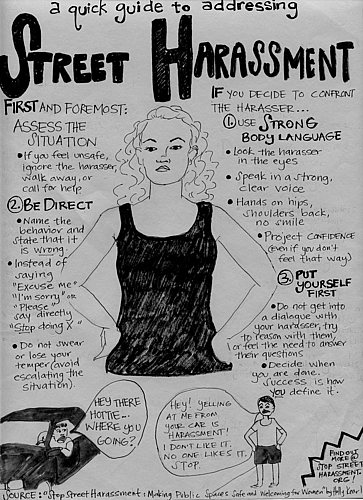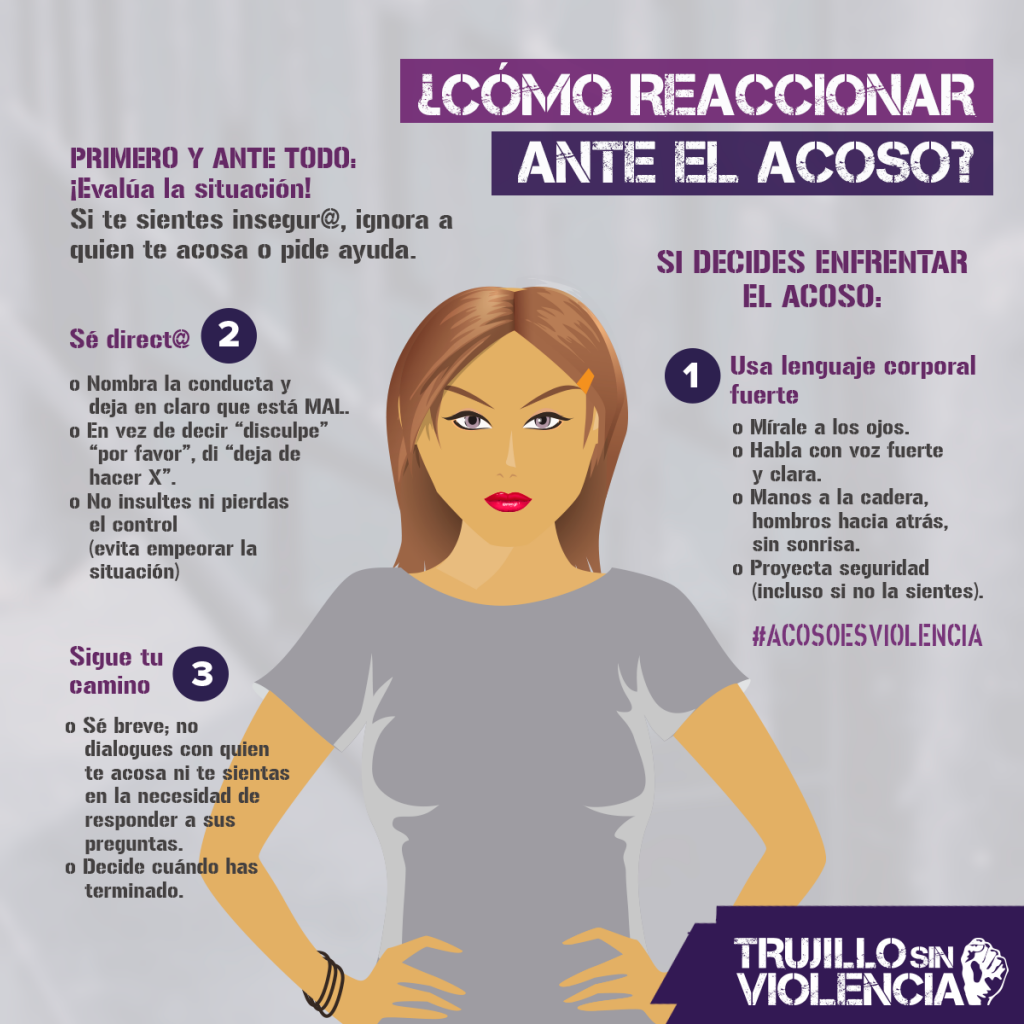Art of all forms has the power to move people and creative portrayals of street harassment issues can help raise community awareness that it is a problem. The art may be visual and on display in a museum exhibit or the foyer of a school or conference hall, or it may be performance-based and occur on the streets near your home. Here are six examples:
A multimedia art exhibit on catcalling by Jenga Mwendo in New York City in the early 2000s. One of the components was the Walk of Shame. The artists built a hall with cloth walls onto which videos of men catcalling were projected. This was to give men who walked through a glimpse into what it feels like to be objectified walking down the street.
Another component was the Talking Heads. Mwendo interviewed men, women, and girls about street harassment, asking them all the same questions. Then she edited and compiled the video clips. The finished piece was a row of computers featuring each interviewee, synced so that when they played, it seemed like they were on a panel talking with one another.
A few components were more static and less high-tech, but still effective. For example, for one week, Mwendo noted when and what street harassment she experienced. Then she wrote it all in a long list format and posted it on a wall. She said that during a group discussion, a man stood up and said he did not understand the volume of the harassment before seeing her list.
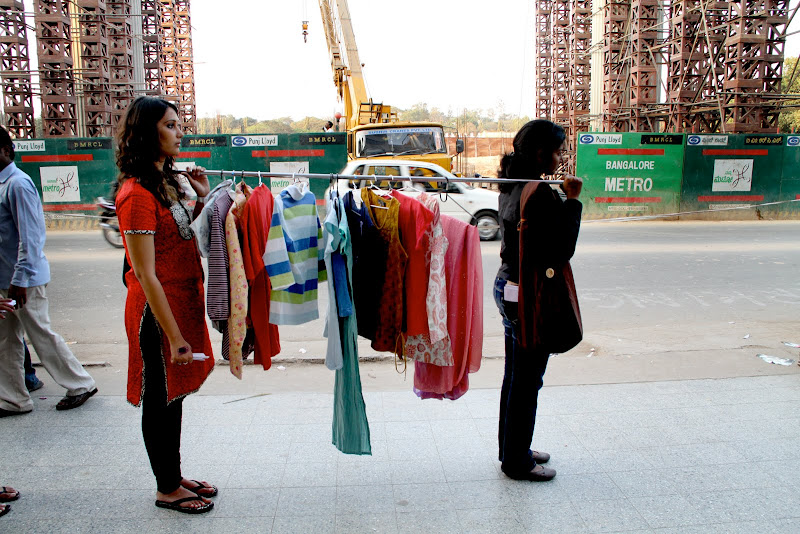 2. Blank Noise Performance Art
2. Blank Noise Performance Art
Using performance art, as well as visual art and online activism, Jasmeen Patheja and members of her organization Blank Noise are challenging the notion that public spaces are for men and are opening a dialogue around the ways women and men occupy and interact in them. One example of their many projects is the “I Never Ask for It” campaign. Women in India who wear jeans and other nontraditional clothing are blamed for causing eve teasing. To combat such harmful and false victim-blaming, Blank Noise is collecting clothing for the “I Never Ask for It” campaign to visually demonstrate the range of clothing women are wearing when men eve tease them. They hope to have 1,000 articles before exhibiting them.
3. Hot Pussy is No Way to Say Hello
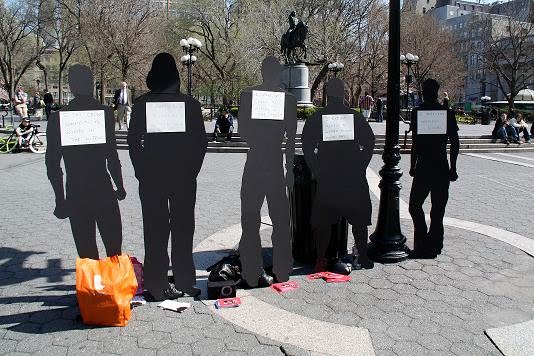 Graduate student Sarah VanDenbergh and HollaBack NYC initiated a “Hot Pussy is No Way to Say Hello” campaign. VanDenbergh said she created six life size silhouettes of men and placed them in Union Square on a Saturday from 9 a.m. – 2 p.m. Attached to the cutouts were signs that said: ‘I grope women on the train,’ ‘I objectify women’s bodies,’ ‘I masturbate on women on the train,’ ‘I make catcalls to women in the street,’ ‘I say crude comments to women on the L train,’ and ‘I expose myself to women almost everyday.’ She had sound boxes with mp3 players and portable speakers sitting in front of the silhouettes playing a loop of 109 crude things men say to women. These quotes were directly from the HollaBack NYC website and from her own experiences. They passed out cards that said, ‘Hot pussy is no way to say hello.” On the back of the cards it said, ‘Sexual harassment is a crime, from crude comments and threats to stalking and indecent exposure…if you see a perv holla back, take their picture and file a police report.’ Included on the card were two pictures of men exposing themselves in public and a woman ‘holla-ing back.’ They passed out around 1,200 cards.
Graduate student Sarah VanDenbergh and HollaBack NYC initiated a “Hot Pussy is No Way to Say Hello” campaign. VanDenbergh said she created six life size silhouettes of men and placed them in Union Square on a Saturday from 9 a.m. – 2 p.m. Attached to the cutouts were signs that said: ‘I grope women on the train,’ ‘I objectify women’s bodies,’ ‘I masturbate on women on the train,’ ‘I make catcalls to women in the street,’ ‘I say crude comments to women on the L train,’ and ‘I expose myself to women almost everyday.’ She had sound boxes with mp3 players and portable speakers sitting in front of the silhouettes playing a loop of 109 crude things men say to women. These quotes were directly from the HollaBack NYC website and from her own experiences. They passed out cards that said, ‘Hot pussy is no way to say hello.” On the back of the cards it said, ‘Sexual harassment is a crime, from crude comments and threats to stalking and indecent exposure…if you see a perv holla back, take their picture and file a police report.’ Included on the card were two pictures of men exposing themselves in public and a woman ‘holla-ing back.’ They passed out around 1,200 cards.
Granet exhibited her signs at the Museum of Modern Art in New York and various traveling shows. Most impressively, she worked with the New York City Department of Transportation (DOT) to get several of her signs posted in public for about a year. She was able to do so successfully in locations near the World Trade Center, the Brooklyn Bridge, South Street Seaport, Borough of Manhattan Community College, and Battery Park. Her signs generated a huge amount of press across the world, including radio, television, newspapers, and magazines.
For International Anti-Street Harassment Day 2011, Hollaback CoMo got dirty with mud and created stencil art on the sidewalks of the downtown Columbus, Missouri, area with slogans like “Street harassment is so uncool – hollaback!” and “hey stranger, don’t call me baby!” and “catcalling is corny.” They were able to have a lot of awareness-raising discussions with passers-by that day.
6. Experimental Film
In 2009, Nuala Cabral, an educator and filmmaker who teaches television production at Temple University, where she recently obtained her Master’s degree in Broadcasting, Telecommunications, and Mass Media, created an experimental film about street harassment. Walking Home, she says, is for the walkers, the talkers and those who say nothing. She wanted to portray a diverse range of people, because street harassment is universal, just like all forms of violence. Including voices of several women explaining their names, signifies universality and solidarity. Walking Home attempts to question and disrupt the acceptance and the pervasive silence around these everyday interactions. It’s been viewed more than 27,000 times in two years.
Ideas for Using Art to Raise Awareness:
1. Create an exhibit on street harassment for display at a local art gallery or a community event. For example, depict (photograph, drawing) women who have been harassed and accompanied by a quote about how it makes them feel. Create a 3-D map and cover it in blinking lights to signify every place a street harassment incident has occurred in a specific area during a certain timeframe. Collect clothing from women in which they were harassed and display them in a clothesline format. Include the harassment story for each article of clothing.
2. Organize or participate in an anti-street harassment poster campaign on campus or in the community.
3. Design anti-street harassment signs or posters to display in the community, including places where harassment tends to occur.
4. Make your own “caution tape” that marks an area where you were harassed. Write your stories on the tape and name it a “street harassment zone.”
5. Organize or participate in street performance, such as role playing street harassment and encouraging audience participation in dialogue afterward.
6. Volunteer your artistic talents to help other efforts. For example, design a logo or banner for an anti-street harassment website or event, or design handouts and posters advertising an anti-street harassment documentary screening or event.
7. Support local art by donating money or by attending the exhibits. Invite someone who does not know very much about street harassment to attend.


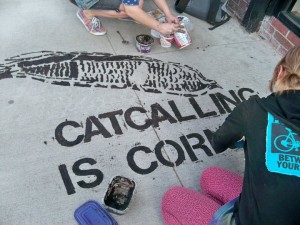

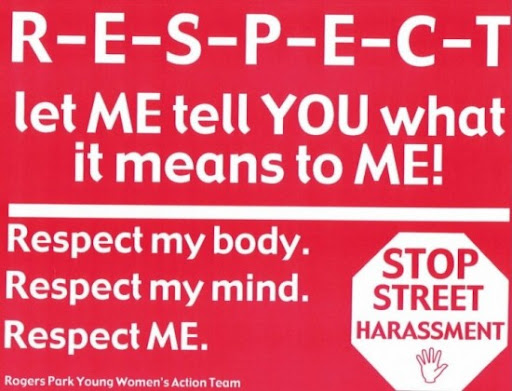 Since 2003, members of the
Since 2003, members of the  In May 2006 and May 2007, YWAT organized a Citywide Day of Action against Street Harassment Campaign to convey the message “the streets belong to ALL OF US.” People participated in 140 forms of activism that day. The young women also hold anti-street harassment workshops at high schools, conferences, and community events. Their latest initiative is working to make public transportation safer in Chicago.
In May 2006 and May 2007, YWAT organized a Citywide Day of Action against Street Harassment Campaign to convey the message “the streets belong to ALL OF US.” People participated in 140 forms of activism that day. The young women also hold anti-street harassment workshops at high schools, conferences, and community events. Their latest initiative is working to make public transportation safer in Chicago.
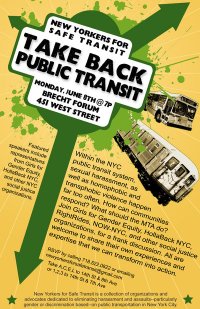 TA to better address the problem of sexual harassment and assault on the subway system, in March 2009, the groups officially formed NYFST.
TA to better address the problem of sexual harassment and assault on the subway system, in March 2009, the groups officially formed NYFST. 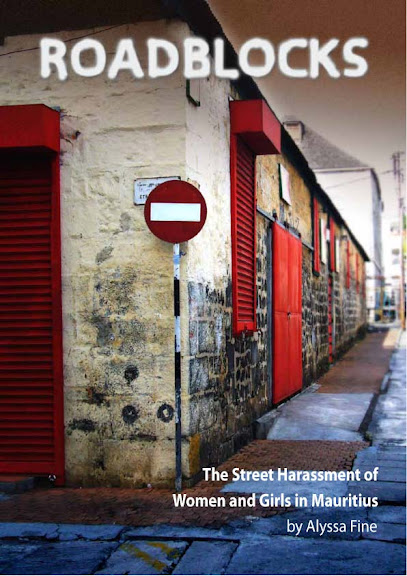 Street harassment is common in Mauritius, an island off the coast of southern Africa. Alyssa Fine, a Midwest native went to Mauritius as a Fulbright scholar to conduct research on sexual harassment in the workplace. During her data collection and analysis, it became clear that many women also wanted to talk about public harassment.
Street harassment is common in Mauritius, an island off the coast of southern Africa. Alyssa Fine, a Midwest native went to Mauritius as a Fulbright scholar to conduct research on sexual harassment in the workplace. During her data collection and analysis, it became clear that many women also wanted to talk about public harassment.
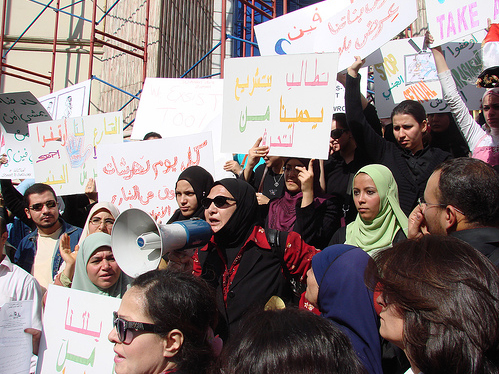 On the advocacy front, ECWR has worked with legal volunteers to draft a new sexual harassment law that increases jail time and fines for violation and puts more pressure on police to stop incidents and take the concerns of targets seriously.
On the advocacy front, ECWR has worked with legal volunteers to draft a new sexual harassment law that increases jail time and fines for violation and puts more pressure on police to stop incidents and take the concerns of targets seriously. 